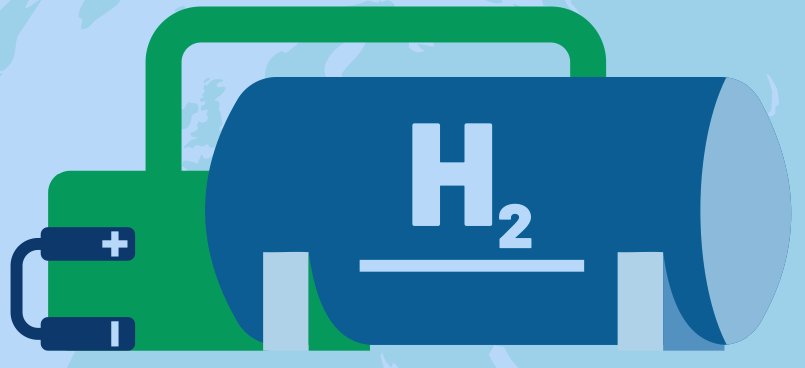
Geneva: The transition to low-carbon energy will require a fast increase in the production of green hydrogen. A joint report by the International Renewable Energy Agency (IRENA) and the World Trade Organization (WTO) published today stresses the urgency of transforming the hydrogen landscape, with existing uses transitioning to a clean hydrogen supply and overall hydrogen production expanding more than five-fold by 2050.

This expansion will require an unprecedented scale-up of renewable generation capacity and electrolyser capacity, according to the report, which provides insights into global hydrogen trade and policies for scaling up production.
Hydrogen produced exclusively from renewable power — known as green hydrogen — is widely recognised as a key pillar in replacing fossil fuels and decarbonizing sectors that cannot easily be electrified, such as some industrial processes, shipping and aviation.
IRENA estimates that hydrogen and its derivatives would meet 14% of global final energy consumption in 2050 in a scenario in which rising global temperatures resulting from emissions are limited to not more than 1.5°C above pre-industrial levels.
At present, most global hydrogen production — around 95 megatons per year — is derived from fossil fuels, contributing substantially to climate change, rather than serving as a vehicle for decarbonization.
“In a net-zero world, the current landscape of hydrogen production and consumption needs to change dramatically,” stated Roland Roesch, Director of IRENA’s Innovation and Technology Centre. “Global trade of green hydrogen and its derivatives will be crucial to link low production cost and high demand locations,” he added.
The report emphasizes that green hydrogen production expansion will require the development of new supply chains. This will have implications in terms of international trade of renewable hydrogen itself or commodities produced with it, as well as the trade of the necessary equipment and services along the value chain.
The trade dynamics for green hydrogen and derivatives in a net-zero scenario will be very different from those of today’s international fossil fuel markets. The geographical distribution of green hydrogen production potential is widespread – as it is linked to solar and wind power supply – and there are few major potential importers. By contrast, in today’s oil and gas markets, a handful of players control a large proportion of the global supply, for a much larger number of importers.
Currently, hydrogen is largely produced using natural gas, with trade flows in the order of US$ 150-200 million per year. The trade of commodities that can be derived from (green) hydrogen, notably ammonia and methanol – is more significant. These were respectively worth US$ 17.5 billion and US$ 14.1 billion in 2022.
The physical characteristics of hydrogen render it technically difficult and economically costly to transport over long distances. The publication highlights how lowering tariffs on key products, building reliable infrastructure, realigning domestic support programmes and developing green government procurement can foster the development of green hydrogen supply chains and the transition to a low-carbon economy. International trade could also play a significant role in matching supply and demand for green hydrogen, as the potential for domestic production in some economies might not be enough to satisfy domestic demand, and it may be cheaper for some economies to import green hydrogen from locations with lower production costs.
“Open, predictable and coherent trade will be key to fostering green hydrogen value chains,” said the Director of the WTO Trade and Environment Division Aik Hoe Lim at the publication’s launch event at the 28th United Nations Climate Change Conference (COP28) in Dubai.
Analysis by IRENA suggests that by 2050 about one-quarter of the total global hydrogen demand could be satisfied through international trade.
Considering specifically the importance of standards and verification procedures for building a sustainable hydrogen market, Lim added: “WTO disciplines can provide useful guidance on how to develop truly international standards, aligned national regulations and compatible verification procedures.”
The publication also addresses the challenges and opportunities for developing economies offered by green hydrogen and its derivatives, such as green methanol and green ammonia. It underscores the importance of international cooperation and the need to align regulatory frameworks to encourage technology development, enhanced transparency and market growth.
– global bihari bureau





